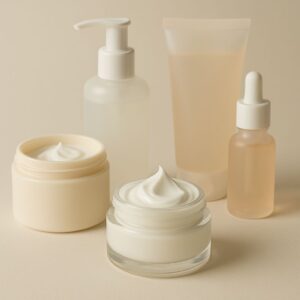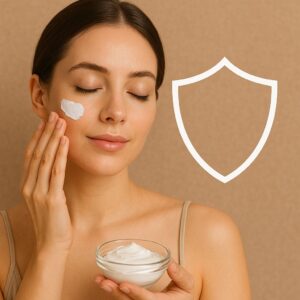No products in the cart.
Return To Shop
It may sound confusing, but your skin can be oily on the surface while dehydrated underneath. Understanding this paradox is key to caring for your skin and achieving a healthy, balanced glow.
Why Your Skin Can Be Oily and Dehydrated
Oily yet dehydrated skin happens when your skin produces excess oil but lacks water in its deeper layers. Factors like harsh cleansers, pollution, stress, and environmental changes can strip moisture, causing the skin to overcompensate with oil production.
Steps to Balance Oil and Hydration
1. Use Gentle Cleansers
Avoid harsh soaps or scrubs that strip natural oils. A gentle, hydrating cleanser removes dirt without aggravating dehydration.
2. Prioritize Hydration
Opt for lightweight, water-based moisturizers containing ingredients like hyaluronic acid and glycerin. These attract water into your skin, keeping it plump without adding extra oil. Hydrating serums can be added for extra moisture.
3. Exfoliate Carefully
Use mild chemical exfoliants like AHAs or BHAs to remove dead skin cells and improve product absorption. Avoid over-exfoliating, which can worsen both oiliness and dehydration.
4. Protect Your Skin
Sunscreen is essential. Choose a lightweight, non-comedogenic formula to protect your skin from UV damage, which can further dehydrate skin and trigger more oil production.
5. Support Skin from Within
Drink plenty of water, maintain a balanced diet, and get enough sleep. Nutrients like omega-3 fatty acids, antioxidants, and vitamins help regulate oil production and improve hydration naturally.
6. Consistency is Key
Balancing oil and hydration requires a mindful, consistent routine. Avoid products that strip or irritate, and focus on nourishing and protecting your skin daily.
Managing oily yet dehydrated skin may seem tricky, but with the right routine, it is entirely achievable. The goal is a healthy, glowing complexion that feels comfortable, hydrated, and vibrant every day.









Add comment